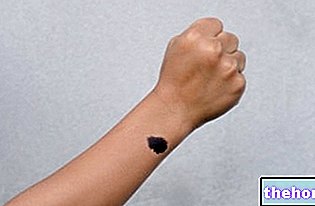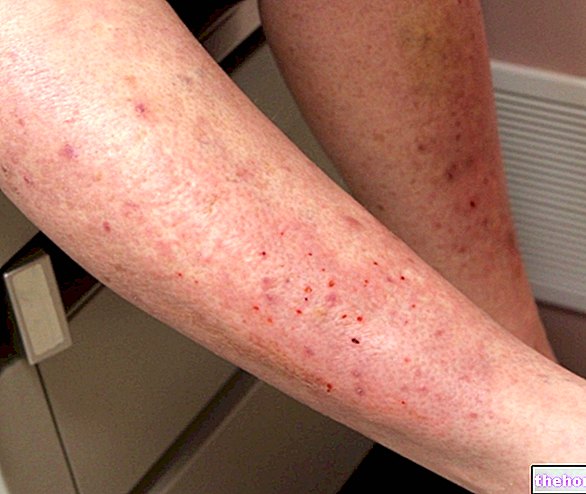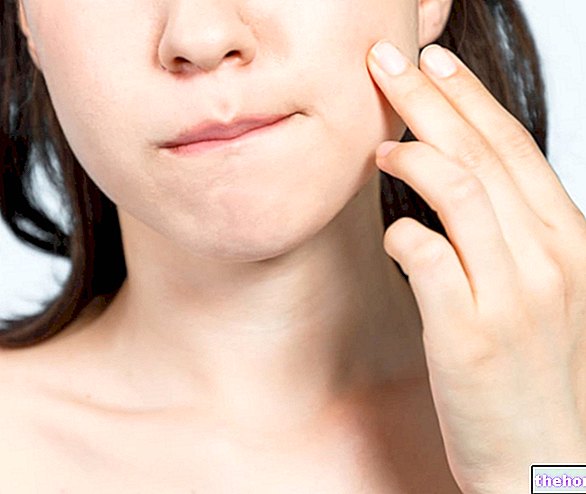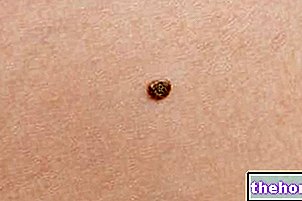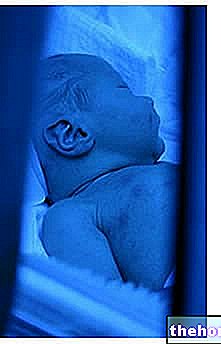Generality
Pemphigus is a serious autoimmune disease affecting the skin and / or mucous membranes; it is a bullous dermatosis characterized by the detachment of the epidermal cells that make up the stratified epithelium (acantholysis). Pemphigus develops following an interaction between endogenous (genetic) and environmental factors. The course of the disease can be subacute or chronically progressive.

Symptoms
For further information: Pemphigus Symptoms
The primary lesions of pemphigus are represented by extremely fragile bubbles and varying in size (from one to several centimeters). Their content is clear and serum-like.
Bullous lesions of pemphigus have two distinctive clinical features:
- they arise on normal skin, therefore they are not associated with a periwound inflammatory phenomenon;
- rubbing the healthy skin near a blister with a finger, a characteristic detachment of the epidermis occurs, known as Nikolsky's sign. This reaction highlights the compromise of the cohesion normally existing between the cells that form the epidermis.
Typically, blisters initially appear in the mucous membranes (50% of patients have oral lesions), or they can affect the scalp, face, trunk, axillary cords, or groin region. Pemphigus lesions usually arise on apparently healthy skin. When the blisters rupture, they cause painful erosions and de-epithelialized areas that become crusted. These formations remain as chronic, often painful, lesions for a variable period and can become infected. Any area of the stratified squamous epithelium. it can be affected by pemphigus (for example, the lesions can involve the oropharynx and the upper portion of the esophagus), but the extent of the skin lesions and the involvement of the mucous membranes are extremely variable.

Some signs and symptoms differ according to the clinical variants:
- Pemphigus vulgaris and vegetative pemphigus: they affect the spinous layer of the epidermis. These forms are characterized by the formation of lesions in the mucous membranes, with painful ulcerations, and in the skin, with flaccid blisters (similar to those caused by burns) that break easily and they leave an "unglued area of epidermis at the edges." The lesions can be located on the entire body surface, but especially in areas subject to friction, such as armpits, inguinal regions and genitals. Erosions of the oral cavity are more often present.
- In pemphigus vulgaris, the blisters initially appear on the mucous membranes, break easily, become covered with scabs and tend to resolve without scarring. The epidermis easily detaches from the underlying layers (Nikolsky's sign) and the biopsy generally shows a typical detachment of the suprabasal epidermal cells.
- In vegetating pemphigus vulgaris, on the other hand, after rupture, the bubbles are occupied by soft and exuding vegetations, delimited by an epithelial border.
- Pemphigus foliaceus and erythematous pemphigus: In pemphigus foliaceus and erythematous, the lesions do not occur in the suprabasal region, but in the superficial portions of the spinous layer and in the granular layer.
- In pemphigus foliaceus, flat, flaccid bubbles with little liquid content appear, which do not tend to break, but to merge. Pemphigus foliaceus typically does not affect the mucous membranes: the blisters usually start on the face and scalp, then appear on the chest and back. The lesions are usually not painful, but can sometimes be itchy (when the blisters become crusted). In addition, pemphigus foliaceus can mimic psoriasis, a "drug rash," or some forms of dermatitis.
- Seborrheic or erythematous pemphigus presents blisters that evolve into oily scaly crusts, located in typically seborrheic sites and with similar aspects to seborrheic dermatitis and subacute cutaneous lupus erythematosus.
Diagnosis
Pemphigus is not immediate to diagnose, as it is a rare disease and the presence of the lesions is not sufficient to define the pathology with certainty (as the appearance of chronic blisters and ulcerations of the mucous membranes can be associated with several other conditions). The diagnosis of pemphigus is established on the basis of histopathological findings on the lesions and by means of immunofluorescence techniques on serum or skin of patients, which highlight the presence of autoantibodies directed against desmogleins of the keratinocyte membranes. These examinations will also be investigated by analyzing the The differential diagnosis should be made with respect to other chronic ulcerative lesions of the oral cavity and other bullous dermatoses.

